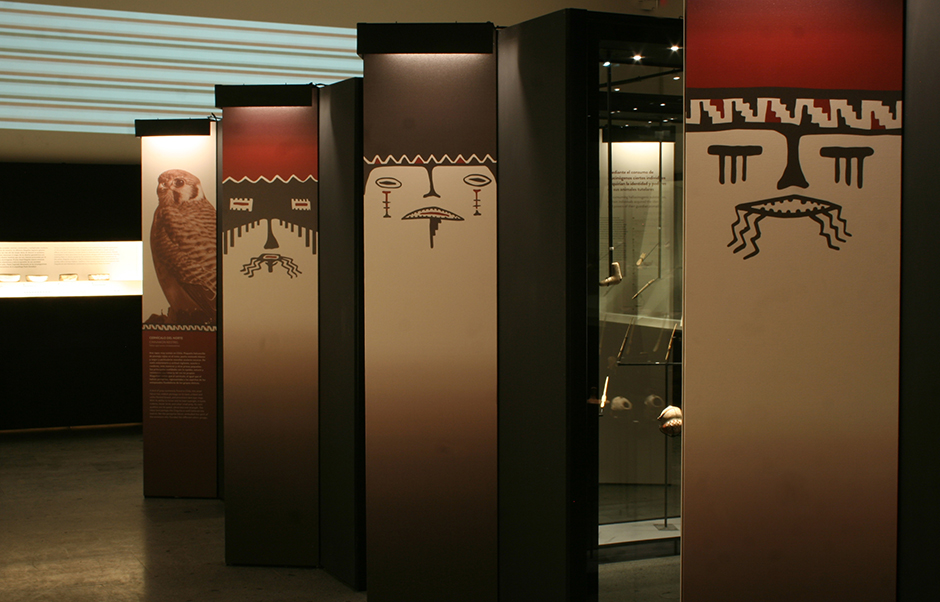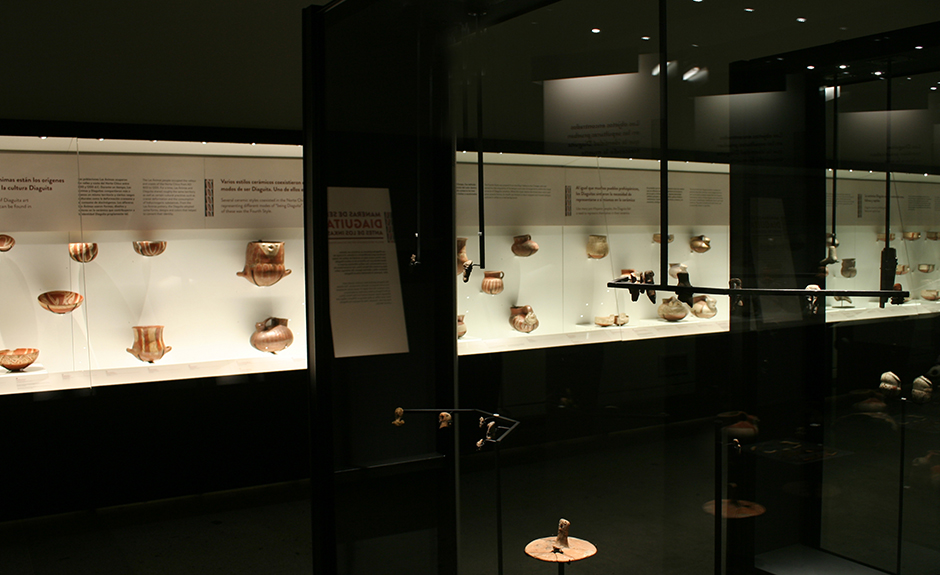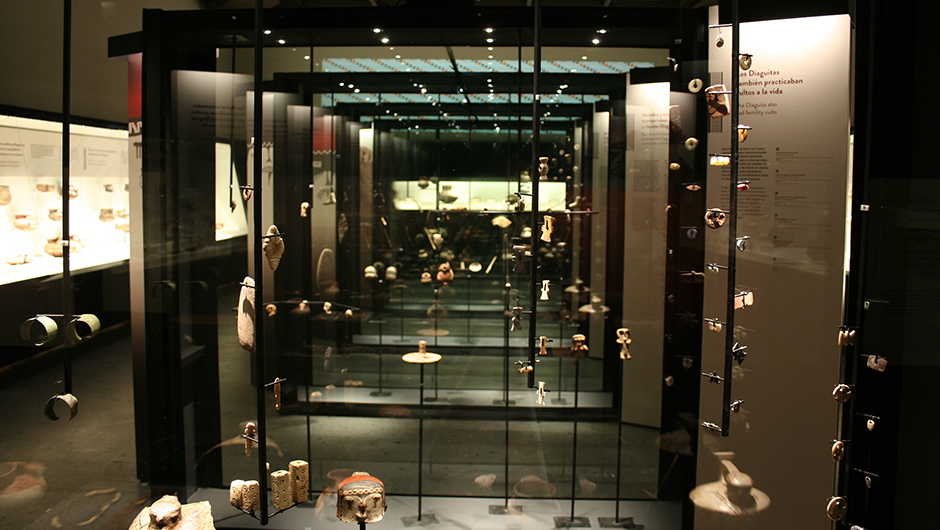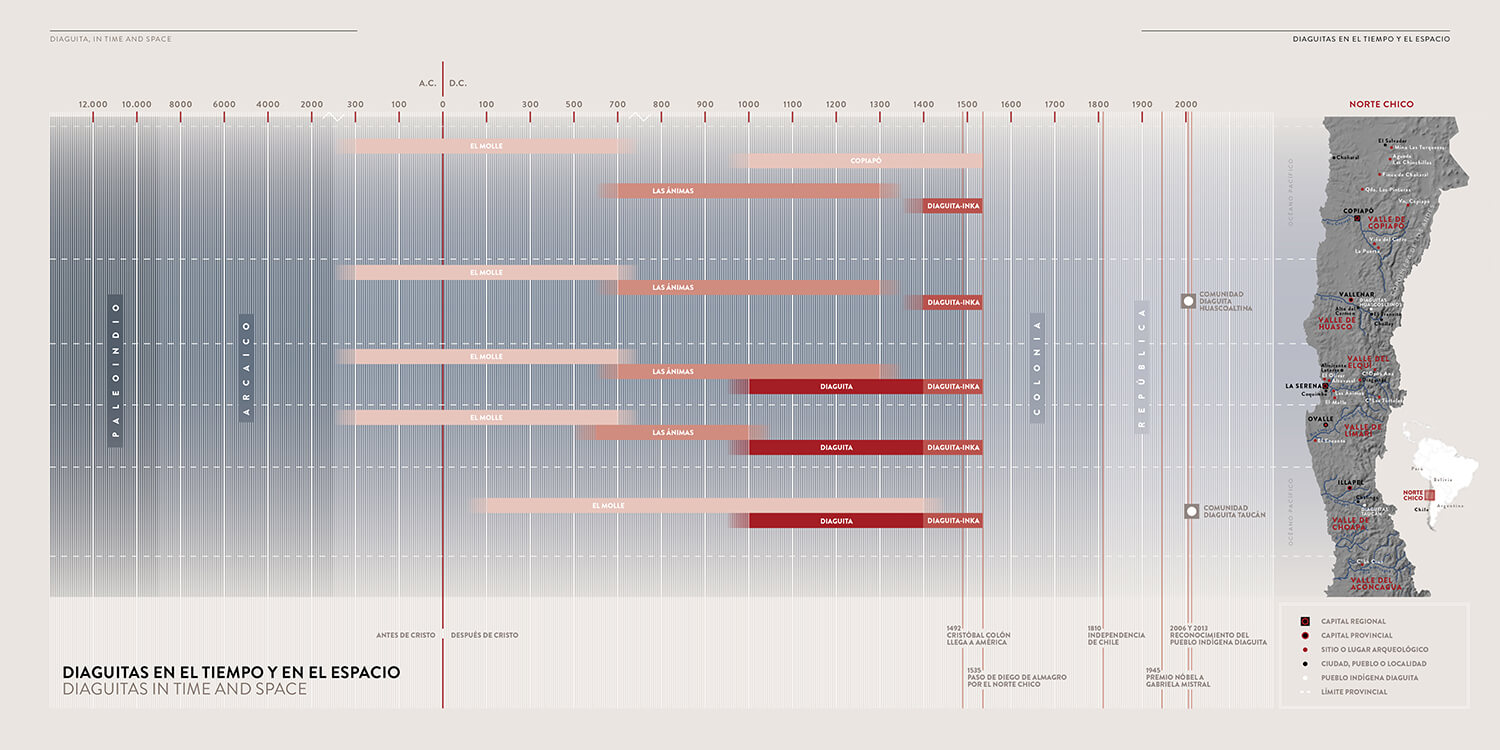The art of being Diaguita
- A little history
- Chino Dances
- Ways of “being Diaguita before the Inka period
- The origins of Diaguita art and culture can be found in Las Ánimas
- Several ceramic styles coexisted in the Norte Chico, representing different modes of “being Diaguita”. One of these was the Fourth Style.
- Like many pre-Hispanic peoples, the Diaguita felt a need to represent themselves in their ceramics
- Color was not the only way in which the Diaguita expressed their identity
- Diaguita ceramics exhibiting bird, feline and reptile faces
- Diaguita tricolor vessels and their shamanic geometries
- Identities in transformation
- The textiles of the Angualasto culture give us an idea of how their Chilean contemporaries, the Diaguita, dressed.
- Objects found in graves prove that Diaguita identity transcended death
- The Diaguita also had fertility cults
- Sounds and melodies accompanied Diaguita ceremonies and rituals
- Shamanic trance played a central role in “being Diaguita”
- By consuming hallucinogenic substances, certain individuals acquired the identity and powers of their guardian animals
- Ways of “being Diaguita” in Inka times
- After the Inka conquest, the Diaguita modified some elements of their culture
- The Diaguita served as agents of the Empire during the Inka expansion into Chile’s Central Valley
- As allies of the Inkas, the Diaguita helped with the administration of the Copiapó Valley
- The Diaguita and the “red metal”
- The Diaguita’s emblematic stone fascinated the Inkas
- The Norte Chico today: Diaguita, in their own way
- Epilogue
- Créditos
A little history
The Chilean Diaguita culture emerged in the late pre-Hispanic era in the fertile Huasco, Elqui, Limarí and Choapa valleys of the Norte Chico as a diverse group of communities subsisting on agriculture, animal husbandry and the extraction of marine resources. Groups seem to have been organized into “halves” in each valley, with one cacique as leader of the upper sector and another governing the lower. The archaeological Diaguita are best known today for their finely-crafted ceramics, which include an extensive repertoire of forms, including the emblematic “duck-shaped pitcher”, with its globular body and modeled head joined to the spout by a handle. In the pre-Columbian world, Diaguita ceramics are striking for their singular combination of white, black and red geometric and figurative designs.
Their origins can be traced back to around AD 700, in the Las Ánimas cultural complex, whose final phase is contemporary with the initial Diaguita phase. The Diaguita culture emerged clearly around AD 1000, and reached its peak in 1300. Around AD 1400, the Diaguita were incorporated into the Inka Empire, a process expressed in the Diaguita-Inka ceramic style. As allies of the Inkas, the Diaguita moved north to the Copiapó Valley and south to the Santiago basin, also crossing to the eastern side of the Andes. In 1535, Diego de Almagro and his army rode through the Norte Chico on their way to Central Chile, an episode that marked the end of the pre-Hispanic era and the beginning of Spanish conquest and domination—a time known as the Colonial Period.
In 1548, the Diaguita rebelled against the Spaniards and destroyed the city of La Serena; the Spaniards refounded it a year later in its present location. After 1570, the Diaguita virtually disappear from the historic record. It is not known for certain whether they were decimated by illness, or disappeared gradually by mixing with other ethnic groups or survived in certain places into the Republican era. The fact is that in 2006 the Government of Chile officially recognized the Diaguita as the country’s ninth indigenous people. Today, they are represented in the Huasco Valley by the “Comunidad Diaguita Huascoaltina” and in the Choapa Valley by the “Comunidad Diaguita Taucán”.
Scripts of this exhibition show that in pre-Inka, Inka, Colonial and Republican times, there have been different ways of “being Diaguita”. As you will see in the videos at the end of the exhibition, present people from the Norte Chico show us their way of feeling Diaguita.







































